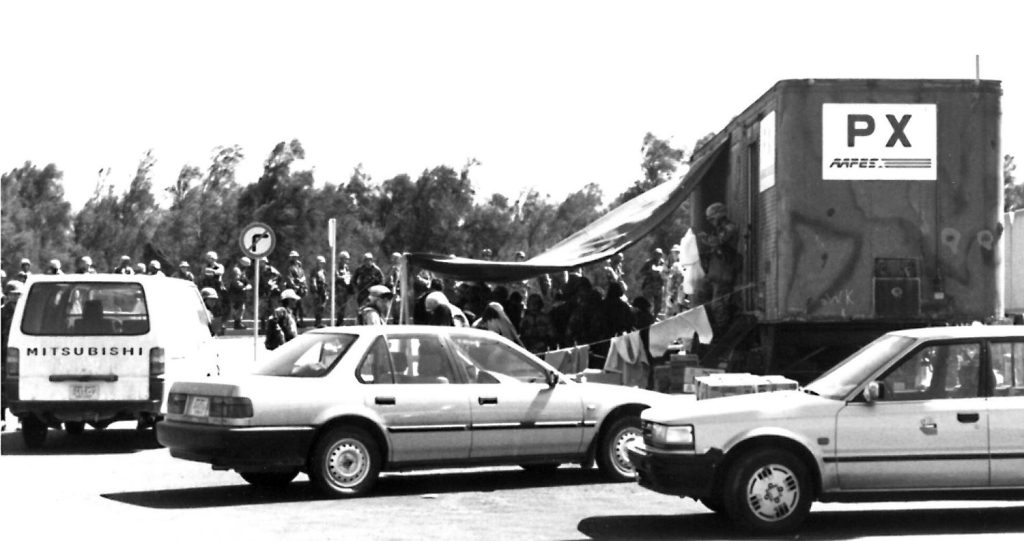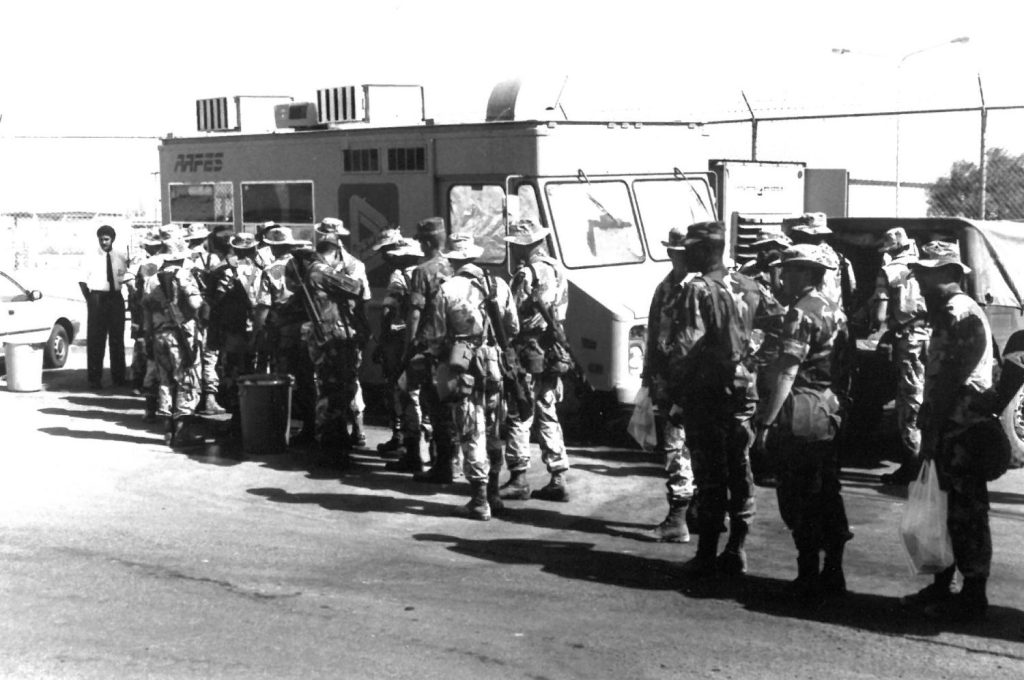Early in the morning of Jan. 16, 1991—33 years ago this week—Operation Desert Storm began, as U.S. Army and Air Force helicopters knocked out Iraqi anti-aircraft facilities and Hellfire missiles destroyed Iraqi radar sites.
For the next 42 days, Air Force, Navy, Marine Corps and coalition force aircraft, augmented by cruise missiles, attacked Iraqi positions and supply lines. On Feb. 24, U.S. and allied forces began the ground war, penetrating deep into Kuwait and Iraq before the end of the day.
Five months earlier, the United States and partner nations began a buildup of arms and forces, known as Operation Desert Shield, in Saudi Arabia after Iraq invaded Kuwait in 1990 and Iraqi President Saddam Hussein refused to withdraw his forces.
The Exchange was there from the beginning. But before Desert Shield began, the Exchange’s Southwest Asia operations consisted of a main store, two smaller stores and a mobile exchange, all in Saudi Arabia. Shortly after Desert Shield started, a distribution center was quickly built, practically from scratch, in Saudi Arabia to support Exchange operations in the Middle East.
By the time Desert Storm started in January 1991, the Exchange had 17 direct-operated retail stores; 152 troop-run facilities; more than two dozen food locations; and 11 barbershops in the region. Nearly 350 associates volunteered to serve those who served.
“I know some of you are saying, ‘You fool, why did you volunteer?’,” Clarence Dixon, a food activity manager who had made a trip to Saudi Arabia shortly before the air war began, said in the Exchange Post. “Well, I’ll tell you something, ladies and gents. If you could see the tears on the faces and feel the hand shakes and hugs from some of the service men and women here when I tell them I work for AAFES and make sure they get what they deserve, you’d be here, too!”
To give readers an idea of what sales were like, Dixon pointed out that one PX did $76,000 a day in retail, and one hot dog stand did $9,000 a day.

Mike Bixby, general manager for the Saudi Arabia Area, sent a dispatch to the Exchange Post saying that after the air war began, all Exchange associates were immediately called and accounted for.
“Our people way up north were in their quarters at the time (the bombing of Baghdad started) and are in underground tunnels at the moment,” Bixby wrote. “At Dhahran, we all had the opportunity to finally wear our gas masks during the missile alert, but they never got this far.” (This wasn’t Bixby’s first risky deployment: He was general manager of the Panama Exchange during Operation Just Cause, the late-1989 action in which President George H.W. Bush sent 24,000 troops from every branch of the military to Panama to protect U.S. military bases in the country from an expected attack by Gen. Manuel Noriega’s troops.)
After Desert Storm began, deployed associates began to face the reality of working in a war zone. On Jan. 26, Robert Phillips, an accounting project specialist, sent this message to the Exchange Post:
“I survived another bomb blast last night … I witnessed the missiles flying across the air above my house. I quickly dodged inside before one hit the buildings.”
A night later, Phillips wrote: “Last night, a Scud was hit by a Patriot missile. Our village manager was en route home when part of the Scud fell to the ground and exploded in flames. He was only 500 yards from the blast, which occurred near our home. He stated his car shook from the blast. He quickly hid underneath as falling pieces of the destroyed Scud littered the area. My two roommates and I witnessed a piece of the missile falling on the house next door to us.”

After hostilities ceased at the end of February 1991, associates began to return to the States, but some stayed in Saudi Arabia and Kuwait to support 3,000 remaining troops. As troops returned to the U.S., the Saudi Distribution Center had a surplus of inventory. Some merchandise, including, Pringles potato chips and Charmin toilet paper, was sold to the Kuwaiti government at Kuwait’s request.
Today, the Exchange operates in Saudi Arabia, Kuwait, Iraq, Jordan, Qatar and the United Arab Emirates.

Sources: Exchange Post archives, U.S. Department of Defense



Leave a Reply